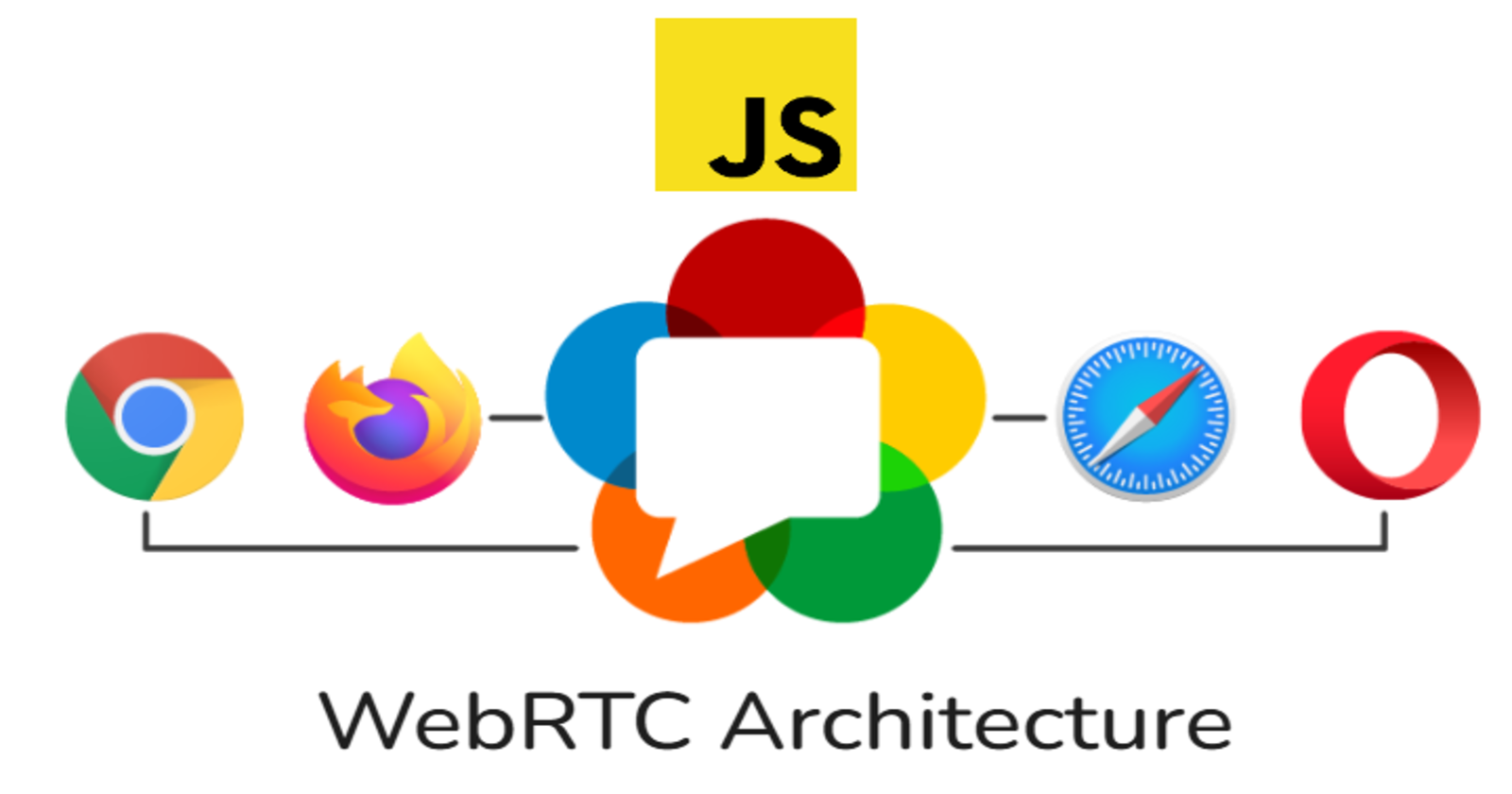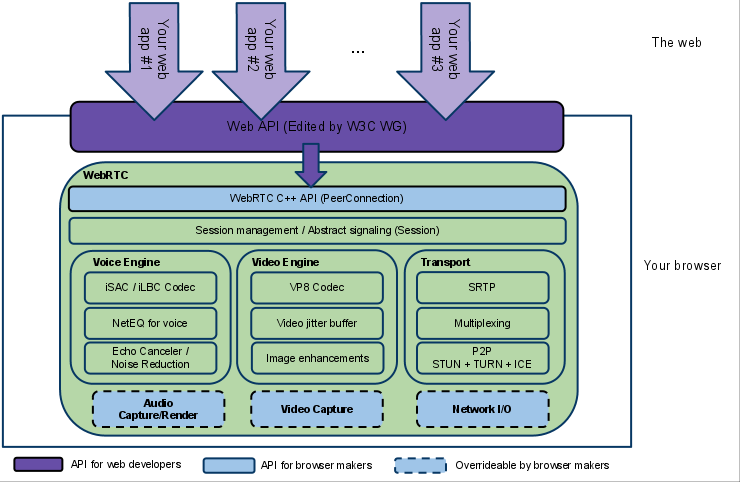Understanding WebRTC Architecture: The Core Components
 Vishal Shinde
Vishal Shinde
Introduction
Now that we have a basic understanding of what WebRTC is and why it was developed, let's dive deeper into its architecture. To enable seamless real-time peer-to-peer communication, WebRTC leverages a structured architecture composed of multiple interdependent components. In this blog, we'll explore the key building blocks of WebRTC.
WebRTC Architecture
WebRTC follows a layered architecture that enables real-time peer-to-peer communication. The architecture consists of multiple components working together to handle media capture, processing, transmission, and connectivity. Below is a detailed breakdown of the core architectural components. WebRTC can be broadly divided into three main layers:
Application Layer - Interfaces like getUserMedia, RTCPeerConnection, and RTCDataChannel that developers use to integrate WebRTC into applications.
Transport Layer - Protocols such as SRTP (Secure Real-time Transport Protocol) for media encryption and SCTP (Stream Control Transmission Protocol) for data transfer.
Network Layer - The ICE framework along with STUN/TURN servers that assist in NAT traversal and connectivity establishment.
The WebRTC architecture consists of multiple components that work together to establish and maintain real-time communication. These include:
1. Web API Layer
The Web API layer provides interfaces that developers use to integrate WebRTC into applications. This includes:
MediaStream (getUserMedia API): Responsible for capturing audio and video from the user's device. It allows access to the microphone and camera, providing the media streams that will be transmitted over the WebRTC connection.
RTCPeerConnection API: The heart of WebRTC, responsible for:
Establishing a peer-to-peer connection between two devices.
Handling audio, video, and data streams.
Managing network traversal through ICE (Interactive Connectivity Establishment).
Encrypting and securing the media exchange.
RTCDataChannel API: Enables peer-to-peer data exchange outside of media streams.
2. WebRTC Core (C++ API)
At the core of WebRTC lies the WebRTC C++ API, which provides the fundamental mechanisms for peer-to-peer communication. It includes:
Session Management and Abstract Signaling
Handles connection establishment, media negotiation, and ICE candidate gathering.
Uses SDP (Session Description Protocol) to negotiate media capabilities.
Voice Engine:
iSAC / iLBC Codec: For high-quality audio transmission.
NetEQ for voice: Manages jitter buffering to smooth out audio playback.
Echo Canceler / Noise Reduction: Enhances audio clarity.
Video Engine:
VP8 Codec: Used for video compression and transmission.
Video Jitter Buffer: Ensures smooth video playback.
Image Enhancements: Improves video quality dynamically.
Transport Mechanism:
SRTP (Secure Real-time Transport Protocol): Encrypts media streams.
Multiplexing: Combines multiple data streams efficiently.
P2P (Peer-to-Peer Communication): Enables direct communication between devices.
STUN + TURN + ICE: Assists with NAT traversal and connectivity establishment.
3. Network I/O and Connectivity
WebRTC relies on a robust Network I/O layer to ensure seamless peer-to-peer connectivity. This includes:
ICE (Interactive Connectivity Establishment): A framework that helps determine the best network path for communication.
STUN (Session Traversal Utilities for NAT) Servers: Help peers discover their public IP addresses to establish a direct connection.
TURN (Traversal Using Relays around NAT) Servers: Used as a relay mechanism when direct peer-to-peer communication is not possible.
Basic Workflow of These Components
The WebRTC architecture follows a sequence of steps to establish communication:
Capture Media: The user’s device captures audio/video using getUserMedia.
Signaling Exchange: Peers generate and exchange SDP (Session Description Protocol) offers and answers through a signaling server to negotiate media capabilities and connection parameters.
ICE Candidate Discovery: STUN/TURN servers assist in finding the best path for connectivity.
Peer Connection Establishment: RTCPeerConnection sets up a secure and optimized connection.
Media/Data Transmission: Audio, video, and data streams are transmitted directly between peers.
Conclusion
WebRTC’s architecture is designed to enable efficient real-time communication through a layered approach. The Application Layer provides developer-friendly APIs, the Transport Layer ensures secure and efficient media transmission, and the Network Layer handles connectivity challenges. Each of its core components plays a crucial role in ensuring smooth media and data exchange. In the next blog, we’ll break down the workflow of these components in detail.
Subscribe to my newsletter
Read articles from Vishal Shinde directly inside your inbox. Subscribe to the newsletter, and don't miss out.
Written by

Vishal Shinde
Vishal Shinde
Hello, my name is Vishal a.k.a Chinu, a first generation student pursuing a bachelor's in CSE. I'm currently working to enhance my Full Stack Web Development abilities, while simultaneously studying DSA using Java. During my leisure time, I enjoy photography and often focus on capturing nature.
